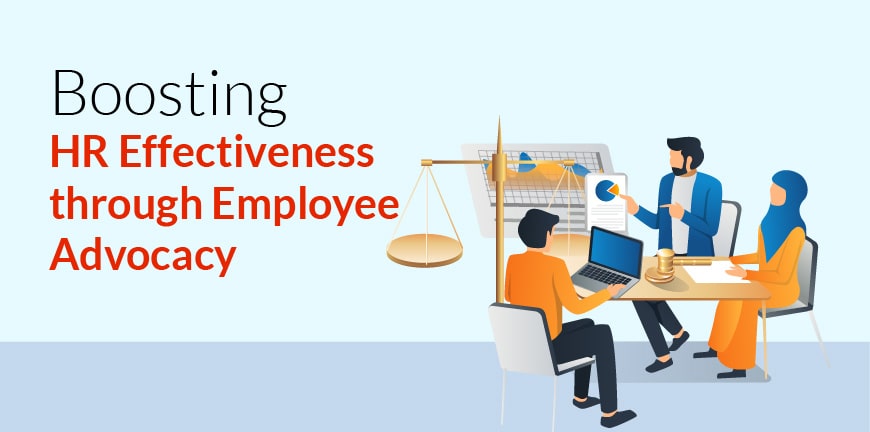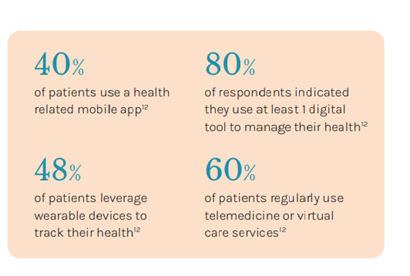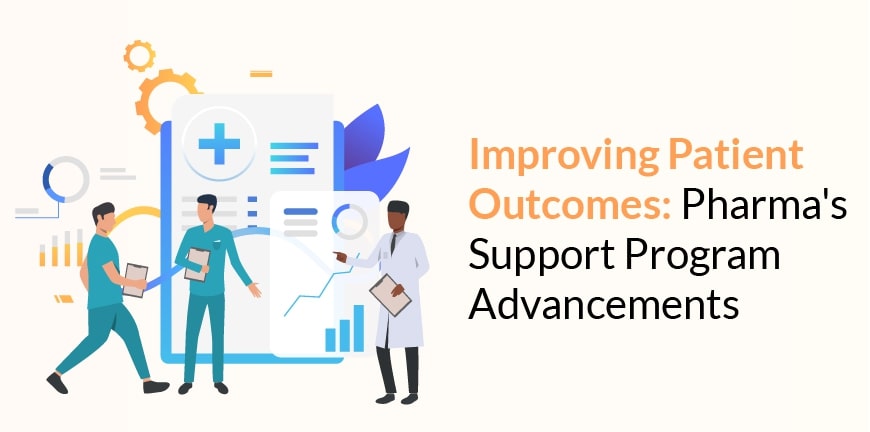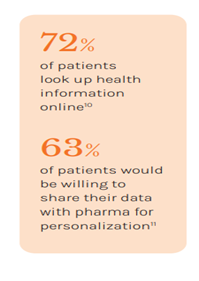
Regulatory Compliance VS Corporate Compliance
26/10/2023
Boosting HR (Human Resources) Effectiveness through Employee Advocacy
30/10/2023Did you know that pharmaceutical organizations invest close to $5 billion every year in patient support programs (PSPs) yet fail to fully harness their potential in driving patient value? What do think are they doing wrong?
Initially PSPs relied on traditional, people-driven engagement solutions, delivered through nurse and case manager engagement. Of course, human based interaction is required 100% in a PSP (Patient Support Program) model, but you cannot deny that technology can afford greater potential to meet patient needs.
From improving patient experience to delivering better outcomes at lower costs, the advancement of technology has proven to be extremely promising in the world of patient care. It is also a great opportunity for patient support programs to maximize their personalized outreach strategies and communications.
AI (Artificial Intelligence) can help a great deal in improving medication initiation and adherence rates by connecting with patients personally.
Ways in Which Pharma Companies Can Help Improve Patient Care
Pharmaceutical companies invest significant resources toward patient support, and that investment continues to grow. It is not a mystery—companies see benefits from the increased engagement. This drives the search for new and better ways to reach healthcare consumers and provide a high-quality support experience.
Personalized Interventions
The pharma industry spends nearly $31B every year just to get to the moment of prescription and yet around 30% of patients ignore the script and do not start the prescribed therapy on time.
Additionally, as mentioned initially in the article, the industry spends about $5B to develop patient resources such as education and support but only 3% of the patients access it with more than of them dropping therapy within 6 months.
In order to deliver personalized support that cuts through the noise, AI is necessary. AI technologies can take countless demographic variables, challenges, and data, and reveal exactly how to best deliver optimal patient interventions that drive engagement and outcomes.
Personal variables like a text, a phone call, an email, or even a combination of them, may work differently for different individuals.

Source: Accenture, Medidata, Deloitte
Real-Time learning
How do you analyse patient intent? Some of the factors that contribute to it are location, education, age, gender, income, and household. While this can be tricky to track, AI on the other hand takes all datapoints, analyses them and determines the action that is suited best for engaging with individual patients.
AI’s capability of continuously learning and improving results from interventions, patient data and behaviour enables easy performance optimization without costly or time-consuming A/B testing.
This paves the way for continually improving and refining your outreach and engagement strategies, delivering overall greater engagement, initiation, adherence, and outcomes.
Patient Prioritization
AI’s predictive capabilities enables PSP team members to better allocate resources where they will have the most impact and remove the extra efforts from patients that do not benefit them.
For example, a PSP manager is on vacation for a prolonged period due to which there is extra caseload on the other members of the team. With AI’s intervention it is possible to distribute the caseload among the members in a resourceful and effective manner ensuring the PSP model focuses its resources on the right patients at the right time.
Collect and Analyse Data
Pharma companies collect as much data as possible on patients’ health, behaviour, preferences, and needs. Where does this data come from? It comes from channels such as wearables, surveys, and patient health records. Upon collection of data, AI can help analyse large data sets and identify insights to improve patient experience.
Develop Patient Profiles
Pharma should develop patient profiles based on the data collected and analysed. These profiles include information such as patient demographics, health status, behaviour patterns, and preferences.
Leverage Digital Technology
Its 2023 and the advancement in digital technology has not just stunned everyone but is being highly sought after by most companies and businesses. With digital innovations such as wearables, remote monitoring devices and telemedicine, pharma companies can deliver personalized support to patients. After all personalized care is what every patient needs and looks forward to. These technologies enable pharma to monitor patients’ health in real-time and provide timely interventions when needed.
Innovation is Key to a Patient-Centred Approach
The goal is to meet a patient’s needs and expectations successfully, as it enhances the possibility of better health outcomes and even aids in improving the pharma company’s relationship with its end users. With the advancements in technology, pharma companies have developed innovative tools and services that can be personalized to meet the unique needs of individual patients.

Source: Deloitte
Interactive Virtual Tools
Innovative technology is being used everywhere and pharma companies are not too behind. In recent times, they have taken to interactive virtual tools such as 3D animations, virtual reality, and augmented reality to engage and inform patients about their health conditions and treatments. These tools provide personalized educational materials and interactive resources.
Chatbots and AI
Chatbots and some other forms of artificial intelligence are a fantastic way to engage with patients in real-time and provide personal support. Chatbots are useful as they can answer patients’ questions and provide them with the right advice and offer tailored recommendations.
Gamification
Most pharma companies have started using gamification to engage patients to monitor their health better and encourage them to take an active role in managing their conditions. Some companies have even gone as far as to develop mobile apps that use game-like elements to incentivize healthy behaviours and provide feedback to patients.
Remote Monitoring
Remote monitoring is nothing less than a boon for pharmaceutical companies as it enables them to collect real-time data on patients’ health and treatment progress. This data can be used to engage patients virtually and provide personalized support services like adjusting medication doses or providing lifestyle recommendations.
Of course, all of these tools rely on users’ technical acumen. However, the level of comfort of patients and the user-friendliness of the tools continue to advance. That being said, it is quite clear that these innovations have tremendous potential in personalizing patient services.
Examples of innovative technologies Incorporated by Pharmaceutical Companies
Some of the well-known examples of innovative technology used in Pharma Companies to enhance patient care include-
- Pfizer VR (Virtual Reality) experience for stroke survivors to overcome anxiety and fear of returning to their daily lives.
- Merck’s “Ava” chatbot delivers personalized support to diabetes patients.
- “MS Buddy” chatbot by Novartis delivers personalized support for patients with multiple sclerosis.
- Sanofi’s “Monster Manor” helps children gamify their diabetes management.
- Novartis smart watch monitors heart health vitals and informs patient interventions.
Wrapping it up
Patients need support in so many other areas beyond just finances, and these needs cannot be addressed with a one-size-fits-all approach. To truly make a difference in patients’ lives, pharmaceutical companies must shift their focus to providing individualized, holistic support that considers each patient’s unique circumstances and needs. The future of healthcare is personalized patient support, and it is time for the pharmaceutical industry to embrace this reality and prioritize the needs of patients over their bottom line.
Contact Us For Business Enquiry

Rajkumar Shanmugam
Rajkumar Shanmugam is the Head of HR at ALP Consulting, bringing over 19 years of comprehensive HR leadership experience across India and international markets. His expertise spans talent acquisition, employee relations, performance management, compliance, and HR transformation. Rajkumar has a proven track record of driving people-centric initiatives, enhancing workplace culture, and aligning HR strategy with business goals. With extensive experience in US staffing operations and global mobility, he continues to lead organizational excellence through innovation and employee engagement.





